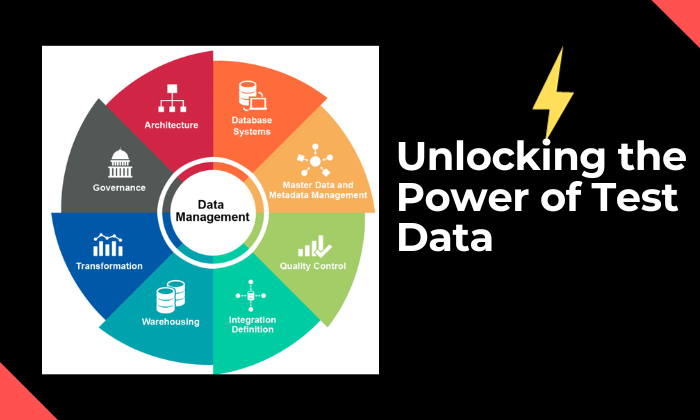In today’s fast-evolving landscape of software development, the significance of high-quality testing and reliable test data cannot be overstated. Test data, a cornerstone of the testing process, plays a pivotal role in ensuring software applications are robust, reliable, and free of critical defects. Moreover, as modern software systems become increasingly complex, the need for efficient Test data automation has never been greater. In this blog, we will explore the immense value of Test Data and delve into the world of Test Data automation.
What is Test data?
Test data, in the context of software testing, encompasses the input and data values used to evaluate applications or systems. It encompasses a wide range of data types, such as user inputs, configurations, database records, and various test scenarios. Test Data serves a multitude of purposes:
- Functional Testing: It helps verify whether the software functions correctly under different conditions and scenarios.
- Performance Testing: Test data aids in simulating real-world conditions to evaluate system performance under varying loads.
- Security Testing: It allows for the identification of vulnerabilities and weaknesses in the software’s security measures.
- Regression Testing: Test data ensures that new code changes do not introduce defects into previously working functionality.
- Boundary Testing: Test data helps explore the system’s limits, such as minimum and maximum input values.
- Edge Case Testing: It includes uncommon scenarios that might not be encountered during regular use.
- Data-Driven Testing: Test data enables the execution of the same test case with multiple input values.
Challenges with Test Data Management
Managing Test Data can be a daunting task, especially for complex systems with large datasets. Some common challenges include:
- Data Quality: Ensuring that Test Data accurately represents real-world scenarios and is free of errors or inconsistencies.
- Data Privacy: Adhering to data privacy regulations and protecting sensitive information.
- Data Freshness: Keeping Test Data up-to-date, especially in systems with rapidly changing data.
- Test data Generation: Creating realistic Test Data that covers a wide range of test cases.
- Test data Scalability: Managing Test Data for systems that handle vast amounts of data.
- Test data Accessibility: Providing easy access to Test Data for testing teams without compromising security.
Test Data Automation: A Game Changer
To address these challenges, Test data automation has emerged as a powerful solution. Test Data automation involves using tools and scripts to generate, manage, and maintain Test Data throughout the software development lifecycle. Here’s why Test Data automation is a game changer:
- Consistency: Automated Test Data generation ensures consistency across test cases, reducing human error and improving testing accuracy.
- Reusability: Automated Test Data can be reused across various test scenarios, saving time and effort.
- Scalability: Automation can handle large datasets efficiently, accommodating the needs of complex systems.
- Data Masking and Privacy: Automation tools can anonymize or mask sensitive data to comply with data privacy regulations.
- Data Refresh: Automated processes can refresh Test Data as needed, ensuring it remains current.
- Version Control: Test data automation can be integrated with version control systems, enabling traceability and auditability.
Implementing Test Data Automation
To implement Test Data automation effectively, consider the following steps:
- Identify Test Data Needs: Understand the specific Test Data requirements for applications and testing scenarios.
- Select Automation Tools: Choose the right automation tools and frameworks that align with testing goals.
- Generate Data Scripts: Develop scripts or use tools to generate Test Data automatically.
- Data Management: Implement strategies for Test data management, including version control and data masking.
- Integration: Integrate Test Data automation into your continuous integration/continuous deployment (CI/CD) pipeline for seamless testing.
- Monitor and Maintain: Regularly monitor and update automated Test Data processes to adapt to changing requirements.
Conclusion
Test Data and Test Data automation are integral components of modern software testing. They play a critical role in ensuring the reliability, performance, and security of software applications. By embracing Test Data automation, organizations can streamline their testing processes, enhance testing coverage, and ultimately deliver high-quality software to their users. As software systems continue to evolve, Test data and automation will remain essential tools for quality assurance in the digital age.




